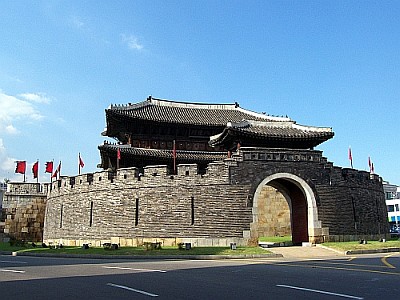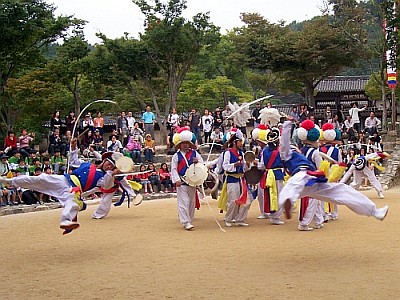
South Korea
Suwon and its vicinity![[Unesco]](/images/unesco-logo.gif)
![[+]](/images/icone-etoile.png)
Suwon is located a little less than 50 km (31 miles) from south of Seoul. People go there principally to visit the fortress, classified by Unesco, and the folk village in Yong-in.
Suwon fortress

Hwaseong Fortress was built in the 18th century by King Jeongjo who wanted to make it his capital after having his father's tomb moved there (He died before the capital was changed and Seoul will remain the capital). The father of King Jeongjo, Prince Sado, had been killed by his own father, King Yeongjo, that was senile. Therefore King Jeongjo kept paying tribute to his father (filial piety) and even appointed him posthumously king.
The procession of King Jeongjo heading for Suwon was drawn in the book "Wonhaeng Eulmyo Jeongni Eugwae" we can see in the National Museum of Seoul. It was reproduced on tiles placed on 192 m (210 yards) long along the channel Cheonggyecheon in Seoul.
The walk along the fortress and visit of the palace (and sanctuary to Prince Sado) easily take 3 hours (almost 5 km (3 miles) only for the fortress). The fortress is to see at dusk.
Yong-in folk village

The folk village in Yong-in is really interesting and worth a visit. It is easy to spend half a day or an entire day there. It presents the arts and traditions of different regions of Korea, with buildings, demonstrations and traditional performances. Homes, farms, temples... have not been specially constructed for the village but are original buildings moved in Yong-in.
In addition to the folk village itself, there is a small world folk museum.
Waujeongsa temple
It is a cemetery temple away from major cities. You can get there by taking a bus from Suwon.
